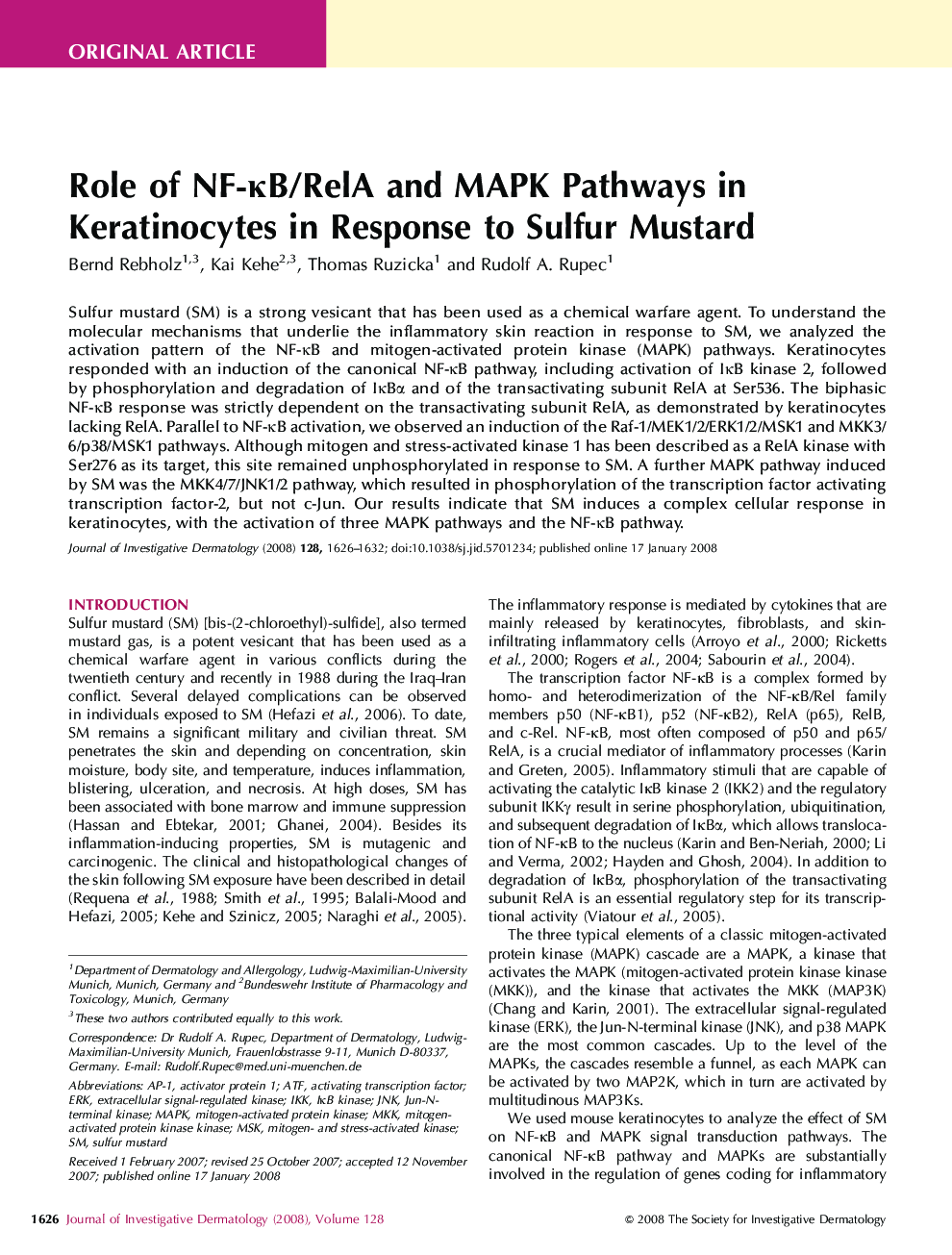| Article ID | Journal | Published Year | Pages | File Type |
|---|---|---|---|---|
| 3217672 | Journal of Investigative Dermatology | 2008 | 7 Pages |
Sulfur mustard (SM) is a strong vesicant that has been used as a chemical warfare agent. To understand the molecular mechanisms that underlie the inflammatory skin reaction in response to SM, we analyzed the activation pattern of the NF-κB and mitogen-activated protein kinase (MAPK) pathways. Keratinocytes responded with an induction of the canonical NF-κB pathway, including activation of IκB kinase 2, followed by phosphorylation and degradation of IκBα and of the transactivating subunit RelA at Ser536. The biphasic NF-κB response was strictly dependent on the transactivating subunit RelA, as demonstrated by keratinocytes lacking RelA. Parallel to NF-κB activation, we observed an induction of the Raf-1/MEK1/2/ERK1/2/MSK1 and MKK3/6/p38/MSK1 pathways. Although mitogen and stress-activated kinase 1 has been described as a RelA kinase with Ser276 as its target, this site remained unphosphorylated in response to SM. A further MAPK pathway induced by SM was the MKK4/7/JNK1/2 pathway, which resulted in phosphorylation of the transcription factor activating transcription factor-2, but not c-Jun. Our results indicate that SM induces a complex cellular response in keratinocytes, with the activation of three MAPK pathways and the NF-κB pathway.
